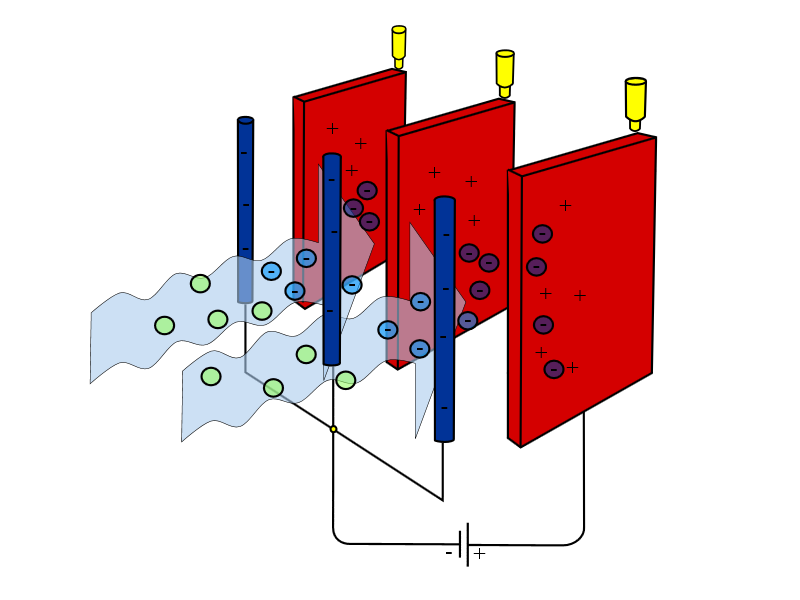
The electrostatic filters follow the theory of the electrostatic charge which describes the positive or negative charging of a surface. The static parameter, means that electrones cannot be transferred from the positively to the negatively charged area through a closed electronic circuit. The accumulation of electronic charge has as a result the creation of an electromagnetic field.
The electrostatic filters use the electromagnetic forces which are created, in order to collect the fine airborne dust. In order those fine particles of dust to be affected and trapped by the electromagnetic field, they have to be ionized, in other words to receive a charge either positive or negative. Therefore, the procedure is as follows. Firstly, the dust particles are passing through negatively charges threads and as a result they receive negative charge. Next, they are travelling through positively charged plates where, due to the electromagnetic force, the negatively charged dust is attracted and attached on the positively charged plates. In that way the trapping of dust particles as small as even 1μm can be achieved.
However, prefilters are mandatory for the correct work of an electrostatic filter. The prefilters will hold the majority of the airborne dust prior to the electrostatic filter.
